This afternoon I’ll be leaving New Zealand. While I’ve thoroughly enjoyed my time here and 100% recommend this program (especially the geology field course), I’ve had a leisurely month to take my finals, explore Dunedin and it’s hidden jems, and gradually say goodbye to new friends. It’s time to leave paradise and get back to a Walla Walla summer.
Mount Cargill
One of my latest adventures was to Mt. Cargill, a remnant of Otago’s volcanic origins. Near the top we climbed a stair of columnar jointed basalt, a structure that forms when lava cools slowly and exposed to air, much like how mud cracks form.

Columnar jointing, stairs of basalt
At the top of the stair was a dense forest of small trees. Trails had been cut through the forest, but the branches were only 4-5 feet above the ground and we had to crouch to move through these forest tunnels.
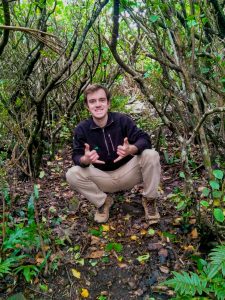
Hobbit forest?
On our way back the basalt stairs looked more dangerous than before, but we made it down with few casualties. (One of our group has a serious fear of heights, but made it down ok)
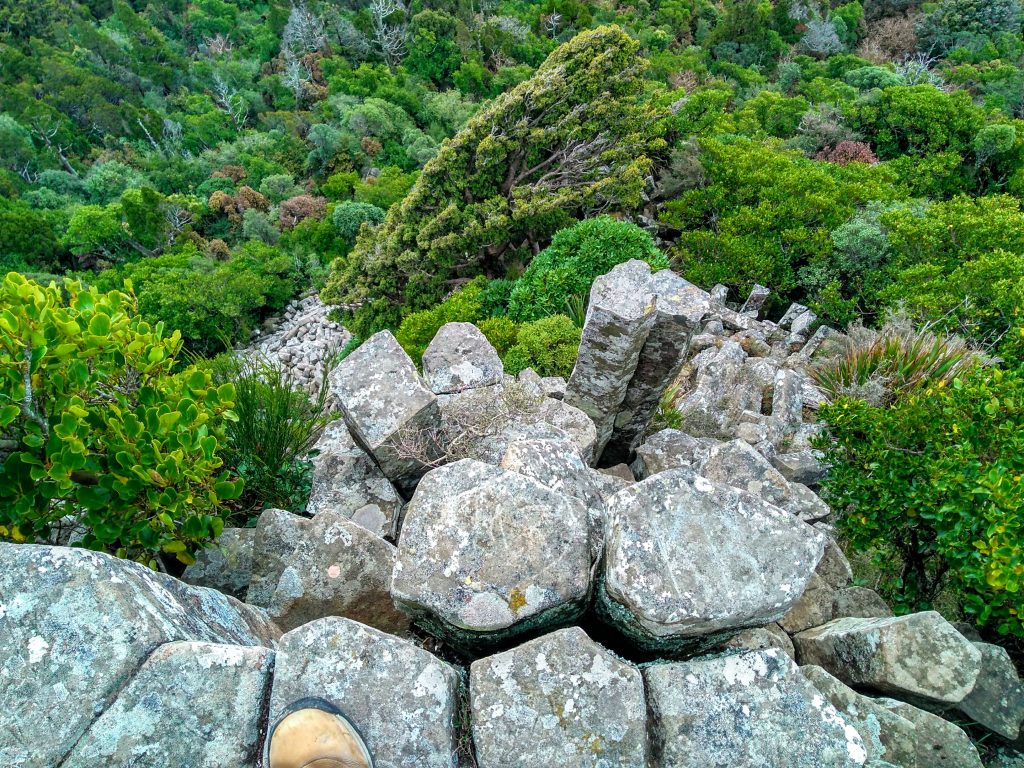
Notice the landslide of basalt columns downslope
Baldwin Street
Dunedin boasts the steepest street in the world as reported by Guinness World Records. At it’s steepest it is 19 degrees from horizontal, which is a 35% grade. Guinness seems to have overexaggerated the slope and confused degrees with grade. Their report publishes 38 degrees, so perhaps they measured 38% grade? Regardless of the mix-up, Baldwin is a very steep street. So much so that it’s steepest portions are paved with concrete (asphalt slides down-slope when the road is made).

At the top of the street there’s a bench, water fountain, and a plaque explaining the history of the street. Dunedin may have been founded by the Scottish Church, but it was designed by English planners… in England! The original city plan for Dunedin was written without any architect actually visiting the country, and so the city grid was simply dropped onto the hilly landscape.
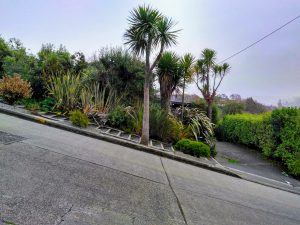
I took an alternate way downslope on a parallel street. This road was replaced by greenspace and a zig-zag walkway at a reasonable grade. Houses were tucked off path behind trees, but their mailboxes were on the track.

On the way down an old kiwi greeted me with “g’day”
Dunedin Botanical Garden
Up until this past month, I had only walked through the lower gardens on my way to the grocery store. The lower gardens are full of perfectly manicured flower beds, broad green lawns, and the greenhouse; typical botanical garden material. My foray into the upper gardens revealed unique New Zealand flora, as well as the ecological breadth of the British Commonwealth.
In the hills east of the lower gardens, across the Leith River, the upper gardens are perched to command a full view of Dunedin. The fountain at the Mediterranean Garden looks west onto the city.
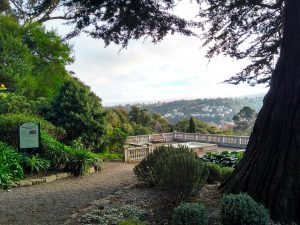
Upper entrance to the Mediterranean Garden
Upslope from the Mediterranean fountain is the South African Garden, full of rocks, desert plants and a couple of giant Eucalyptus trees.
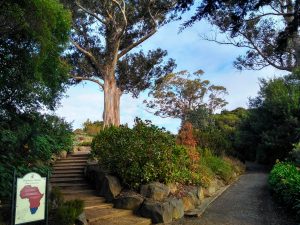
Lower entrance to the South African Garden
Each garden in the upper gardens are connected by a network of forest trails weaving through well tended plots of native bush. At first I found myself walking in circles through the upper gardens, but after a bit of wandering I’ve managed to keep my bearings.
The Aviary and Alex the Kaka
The upper gardens also host an aviary with species from New Zealand, Australia, Tasmania, and India. This afternoon I made friends with one of the captive Kākā (not to be confused with Kea or Kākāpō, related parrot species).

I’ve named him Alex
Male Kaka have noticeably more curve to their beaks than the females, a sexual characteristic which enables males and females to access different food sources and so support a larger population.
Alex hopped over to the fence as I approached and started giving me leaves and twigs from his enclosure. His partner sat napping in a tree, completely uninterested in me.
Alex and I exchanged things for at least fifteen minutes. My favorite gift he gave was a flower. After some searching in the pen to find it, he hopped back on the ledge to drop this little pink flower into my palm.
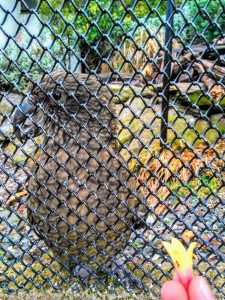
Look at how happy he is!
Ahakoa he iti he pounamu : Although it is small it is a treasure
I took recordings of the other birds, and did countless portrait shots of Alex. Neither of the Kaka made a call, but the rest of the aviary was alive with countless bird chatter. Even the wild birds came to the aviary to make some noise.
The repetitive “yeaaaaaaa yeaaaaaaaa” that starts at 31s is the sound of a Kea.
To quote a great hobbit:
I regret to announce this is the end. I am going now. I bid you all a very fond farewell. Goodbye
